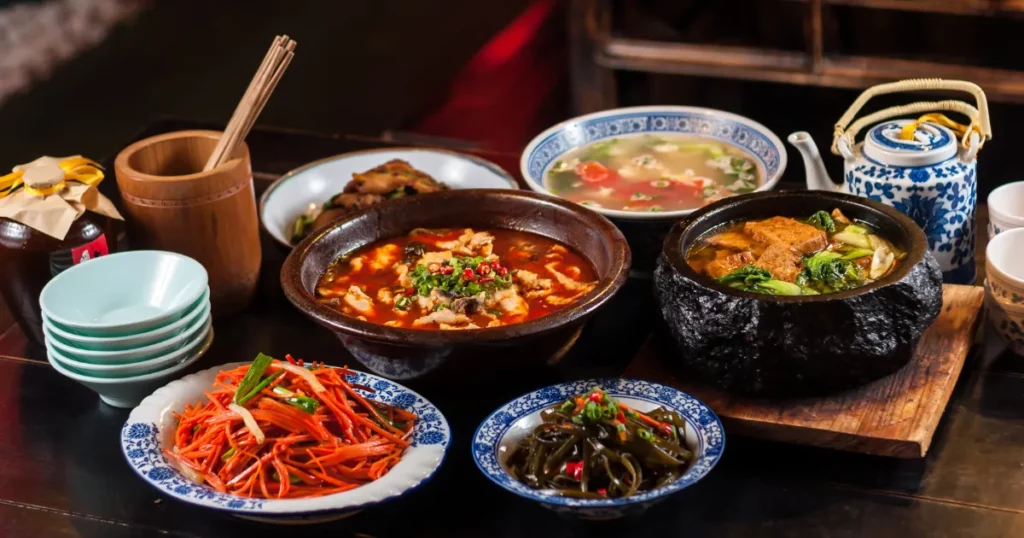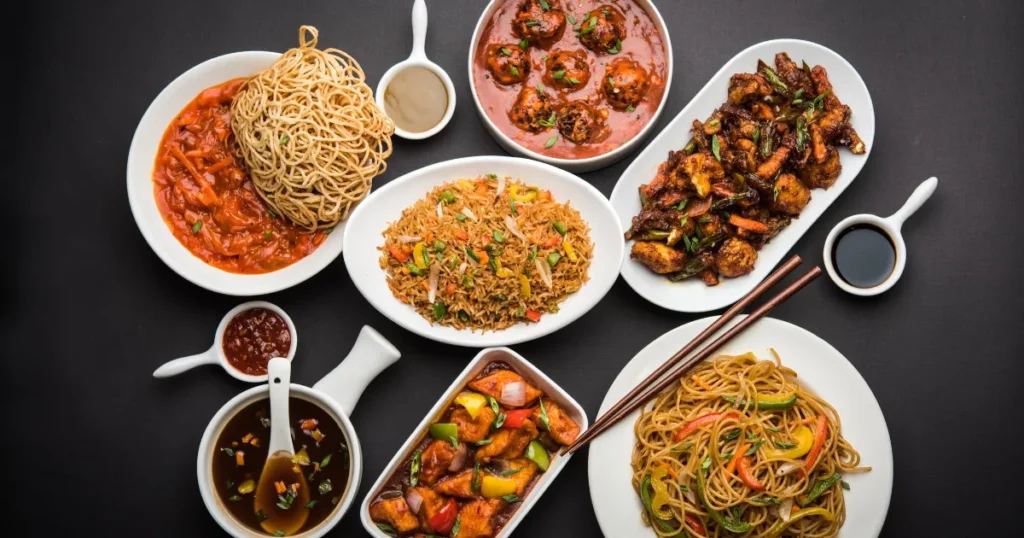Chinese cuisine is one of the world’s oldest and most diverse culinary traditions, boasting a history that spans thousands of years. Globally, the cuisine has gained acceptance and love for its unique textures, ingredients, and taste. This cuisine has evolved from ancient dynasties to modern kitchens, adapting to regional and global influences while maintaining its essence.
In this blog, we will take you on a flavorful journey through the origin and evolution of Chinese cuisine, its fusion with Indian flavors, and its ongoing global popularity.
The History of Chinese Cuisine: A Culinary Legacy Unveiled
The origin of Chinese cuisine can be traced back to ancient China, where food was both sustenance and a reflection of philosophy and culture. As early as the Shang Dynasty (1600-1046 BCE), people relied on staple crops like millet, rice, and wheat. These staples formed the foundation of Chinese culinary traditions, which have continued to evolve over millennia.
In ancient times, simple cooking methods like boiling and steaming were prevalent due to the lack of technology and resources. Thanks to this scarcity of methods, the cuisine came out amazing. Moreover, Chinese culture laid great emphasis on methods of natural curing and hence used local herbs, which enhanced the flavours of the food and carried medicinal characteristics. Confucianism and Taoism also played pivotal roles in shaping Chinese cuisine, emphasizing balance, harmony, and the art of presentation.
The Evolution of Chinese Cuisine

Chinese cuisine evolved significantly under the influence of dynasties, through innovations in cooking techniques, and through the introduction of new ingredients.
Dynastic Influence
Each Chinese dynasty left its mark on the cuisine:
- Han Dynasty (202 BCE–220 CE): Popularized wheat noodles, a staple in northern China.
- Tang Dynasty (618–907 CE): Expanded the use of exotic spices and tea as trade flourished along the Silk Road.
- Song Dynasty (960–1279 CE): Introduced advanced cooking techniques, leading to the development of refined dishes.
- Ming and Qing Dynasties (1368–1912 CE): The Ming and Qing Dynasties integrated ingredients from the Americas, such as chilies, peanuts, and sweet potatoes, into traditional recipes.
Iconic Techniques
Cooking techniques such as stir-frying, steaming, braising, and deep-frying became integral to Chinese cuisine, showcasing its adaptability and precision. The wok, a quintessential Chinese cooking utensil, revolutionized culinary practices by allowing food to be cooked quickly while preserving flavor and nutrition.
Regional Diversity
China’s vast geography and diverse climate gave rise to unique regional cuisines, including:
- Cantonese Cuisine: Known for its mild flavors and dim sum dishes.
- Sichuan Cuisine: Famous for its bold, spicy flavors and liberal use of Sichuan peppercorns.
- Hunan Cuisine: Recognized for its fiery heat and tangy flavors.
- Shandong Cuisine: Renowned for its seafood and strong flavors.
- Jiangsu and Zhejiang Cuisine: Celebrated for their delicate and sweet flavors, emphasizing seafood and fresh produce.
The Arrival of Chinese Cuisine in India: A Fusion of Flavors

Chinese cuisine entered India in the late 18th and early 19th centuries, brought by Chinese immigrants who settled in Kolkata (formerly Calcutta). This began a culinary fusion that would eventually give rise to Indo-Chinese cuisine.
Birth of Indo-Chinese Cuisine
Thanks to trade that started to happen between China and India, both lands were introduced to spices prevalent in the respective nations. The amalgamation led to the introduction of dishes like chili chicken, Manchurian, Hakka noodles, and Schezwan fried rice. The unison included food made using Chinese techniques with Indian ingredients. These dishes gained immense popularity across India, becoming staples at restaurants and street food stalls.
Cultural Adaptation
Indo Chinese food came as a fun version of chinese food. Indian staple herbs and spices like coriander, fenu greek, etc started getting added to chinese recipes giving them a more “desi” twist. Moreover the acceptance for the version kept growing over time.
Today, Indo-Chinese food has carved its identity and is celebrated for its vibrant taste and universal appeal.
Craving Chinese? Order Your Favorite Dishes Now on Swiggy!
Whether you’re in the mood for authentic Chinese cuisine or crave the fiery flavors of Indo-Chinese dishes, Swiggy has you covered. You don’t have to search for “Chinese food delivery near me” and wonder! With the trusted platform of Swiggy, you can explore a wide range of options and get the food at your doorstep. Be it any point of time or any location, online food delivery can help you satisfy your hunger and cravings.
Conclusion
From its humble beginnings in ancient China to its evolution through dynastic influences and its global spread, Chinese food has become a symbol of culinary excellence.
Its journey to India and the creation of Indo-Chinese cuisine highlight its adaptability and universal appeal. Today, the cuisine is one of the most loved, and the food is one of the most demanded foods in restaurants worldwide.
So the next time you savor a bowl of noodles or indulge in a plate of Manchurian, remember the incredible history and cultural significance behind every bite.
FAQ
1. When did Chinese cuisine come to India?
Chinese immigrants who settled in Kolkata introduced Chinese cuisine to India in the late 18th and early 19th centuries.
2. Why is rice so important in Chinese cuisine?
Rice has been a staple in Chinese cuisine for thousands of years, serving as a primary source of sustenance. Its versatility and nutritional value make it a cornerstone of many traditional dishes.
3. How did Indo-Chinese cuisine originate?
Indo-Chinese cuisine originated from the fusion of Chinese cooking techniques and Indian ingredients, created by Chinese immigrants adapting their food to suit Indian tastes.
Author Bio
Satisfying your cravings, one bite at a time. Discover the best eats, trends, and uncover the hidden gems with us to make your online ordering or dining experience a memorable one.
















































































